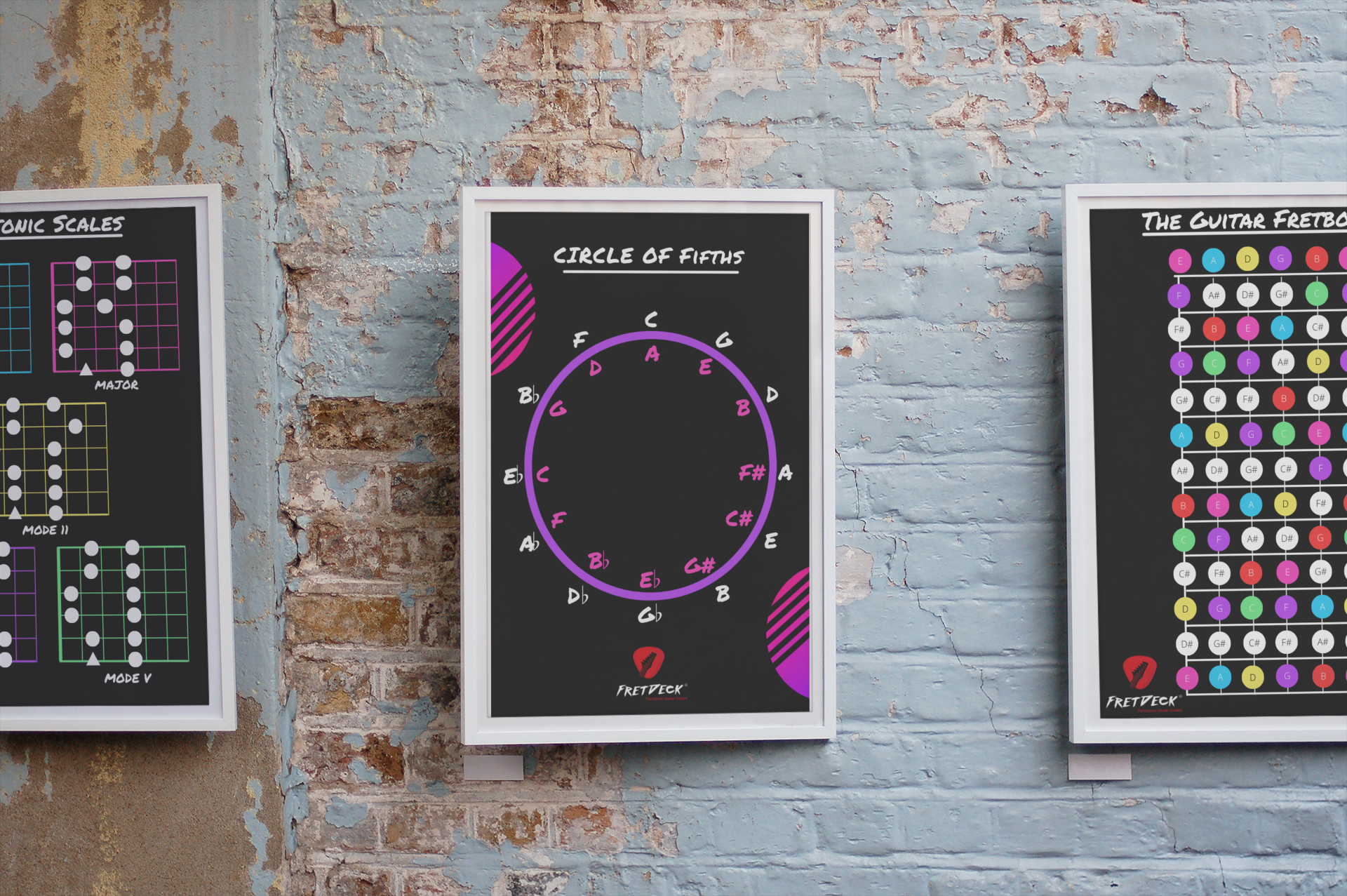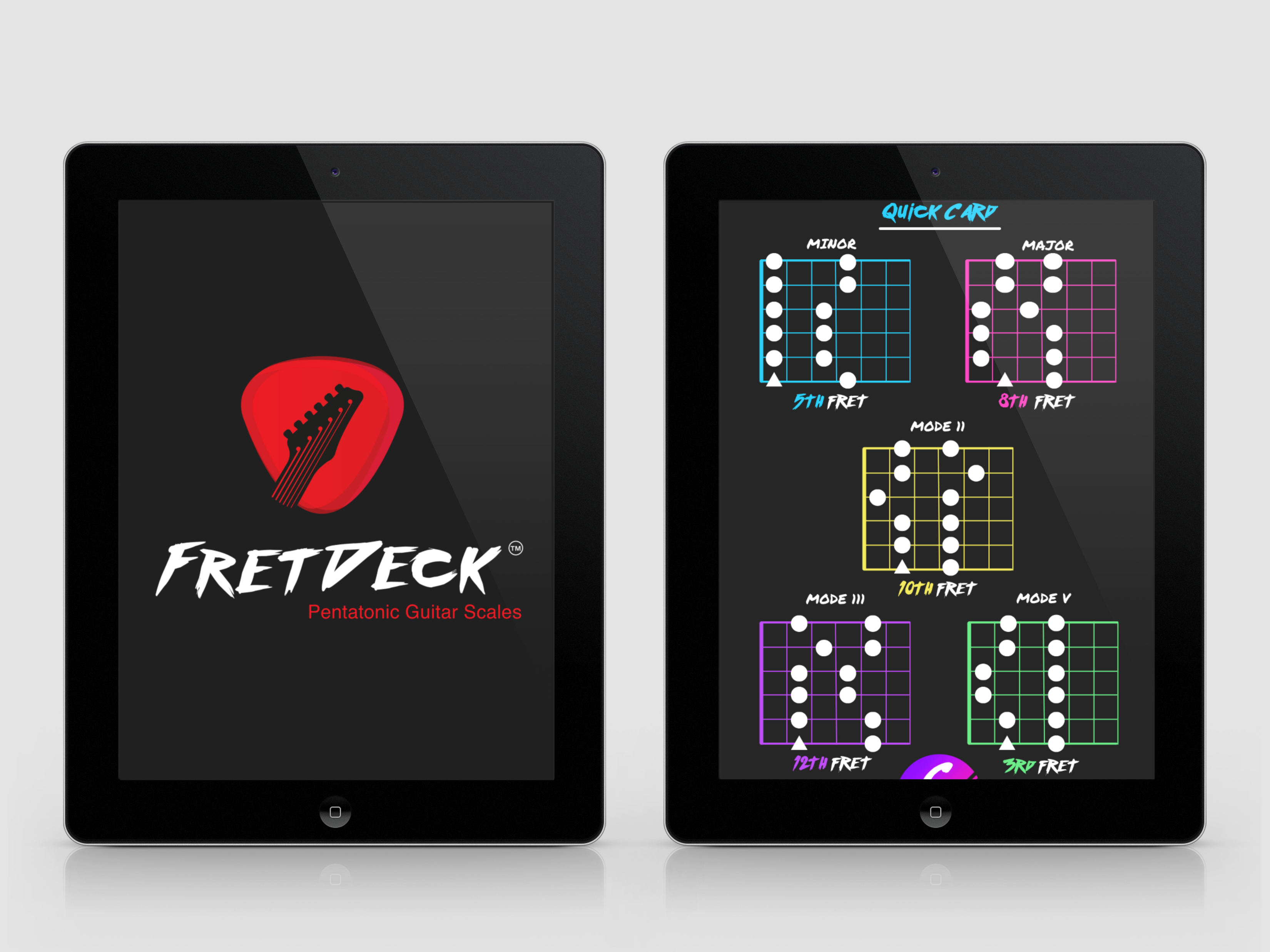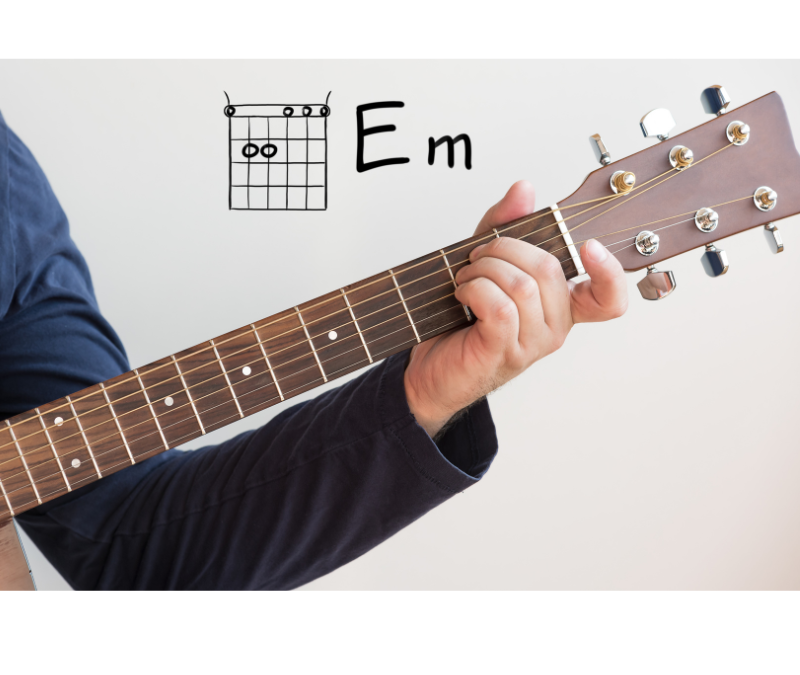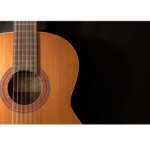If you’ve already learned the basic guitar chords, congratulations! You’ve taken the first step towards becoming a proficient guitarist. Now, it’s time to dive deeper into the world of chords by exploring minor guitar chords. This guide will help you understand the structure of minor chords, introduce you to common minor chord progressions, and provide tips on how to incorporate minor chords into your practice routine.

Download FREE Guitar Charts!
We have 27 FREE guitar charts to help you learn the guitar fretboard. Learn How to play chords and scales with these free resources.
Free Guitar Resources
Understanding the Structure of Minor Guitar Chords
What Makes a Chord Minor?
Minor guitar chords are essential in creating the emotional and often melancholic sound that defines much of music. They are composed of three notes: the root, the minor third, and the perfect fifth. This differs from major chords, which use a major third instead.
- Root Note: The fundamental note upon which the chord is built.
- Minor Third: A note that is three half-steps (semitones) above the root.
- Perfect Fifth: A note that is seven half-steps above the root.
Building Minor Guitar Chords
Let’s break down some common minor chords and see how they are constructed:
- A Minor (Am)
- Root: A
- Minor Third: C
- Perfect Fifth: E
- E Minor (Em)
- Root: E
- Minor Third: G
- Perfect Fifth: B
- D Minor (Dm)
- Root: D
- Minor Third: F
- Perfect Fifth: A
By lowering the third note of the corresponding major chord by one semitone, you can form a minor chord. For example, A major (A, C#, E) becomes A minor (A, C, E) by lowering the C# to C.
Common Minor Chord Progressions
Minor chords are often used to create rich, emotional progressions in music. Here are some of the most common minor chord progressions you should know:
i – iv – v Progression
This is one of the simplest and most commonly used minor chord progressions. It consists of the first (i), fourth (iv), and fifth (v) chords of the minor scale.
Example in A Minor:
- Am (i) – Dm (iv) – Em (v)
i – VI – III – VII Progression
This progression moves from the minor i chord to the major VI, then to the major III, and finally to the major VII. It’s known for its versatility and emotional depth.
Example in A Minor:
- Am (i) – F (VI) – C (III) – G (VII)
i – iv – VII – III Progression
Another popular minor progression, it starts with the minor i, moves to the minor iv, then to the major VII, and finally to the major III.
Example in D Minor:
- Dm (i) – Gm (iv) – C (VII) – F (III)
i – V – VI – iv Progression
This progression, often used in pop and rock music, starts with the minor i chord, moves to the major V, then to the major VI, and finally to the minor iv.
Example in E Minor:
- Em (i) – B (V) – C (VI) – Am (iv)
Implementing Minor Chords in Your Practice Routine
Now that you understand the structure and common progressions of minor chords, it’s crucial to integrate them into your practice routine. Here are some tips to help you do that effectively:
Warm-Up with Minor Chords
Start your practice sessions by warming up with minor chords. Play each chord slowly, ensuring that each note rings out clearly. Focus on the correct finger placement and transitions between chords. A good warm-up might look like this:
- Play the A minor chord for four counts.
- Transition to D minor for four counts.
- Move to E minor for four counts.
- Repeat this cycle a few times.
Practice Minor Chord Progressions
Dedicate a portion of your practice time to playing minor chord progressions. Start with simple progressions like i – iv – v, and gradually work your way to more complex ones. Use a metronome to keep time and start slow before gradually increasing your speed.
Exercise: i – iv – v Progression in A Minor
- Am (four counts)
- Dm (four counts)
- Em (four counts)
- Repeat
Incorporate Songs with Minor Chords
Playing songs that use minor chords is a great way to apply what you’ve learned in a musical context. Choose songs you enjoy that feature minor chords and practice playing along. Here are a few beginner-friendly examples:
- “House of the Rising Sun” by The Animals (Am, C, D, F, E)
- “Riders on the Storm” by The Doors (Em, A)
- “Stairway to Heaven” by Led Zeppelin (Am, G, C, D, F, E)
Experiment with Different Keys
While practicing, try playing minor chords and progressions in different keys. This will not only improve your finger dexterity but also help you become more comfortable with the fretboard. For instance, if you’ve been practicing in A minor, switch to D minor or E minor.
Use a Capo
A capo can be a useful tool for practicing minor chords in different keys without having to learn new fingerings. Place the capo on different frets and play your minor chord shapes as usual. This will allow you to hear how the same chords sound in various keys.
Record Yourself
Recording your practice sessions can be incredibly beneficial. It allows you to listen back and identify areas that need improvement. Record yourself playing minor chord progressions or songs and analyze your performance. Pay attention to chord clarity, timing, and transitions.
Create Your Own Progressions
Once you’re comfortable with standard minor chord progressions, try creating your own. Experiment with different combinations of minor and major chords to see what sounds good to you. This exercise will enhance your understanding of chord relationships and boost your creativity.
Use Minor Guitar Chords in Improvisation
If you enjoy improvising, try incorporating minor chords into your improvisations. Play a minor chord progression and improvise melodies using the corresponding minor scale. This will help you understand how minor chords and scales work together to create music.
Join a Guitar Community
Joining a guitar community, whether online or in person, can provide you with additional support and motivation. You can share your progress, ask for advice, and learn from other guitarists. Communities often have challenges or jam sessions that can help you practice minor chords in a fun and engaging way.
Conclusion
Mastering minor guitar chords is a vital step in your journey as a guitarist. By understanding their structure, practicing common progressions, and incorporating them into your routine, you’ll develop a deeper appreciation for the emotional depth they bring to music. Remember to be patient with yourself and enjoy the process. With consistent practice and dedication, you’ll soon find yourself confidently playing minor chords and incorporating them into your favorite songs and improvisations.

Download The FretDeck & Chord Secrets Course!
Download Course










